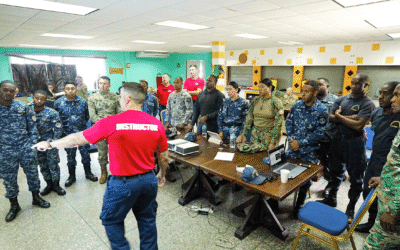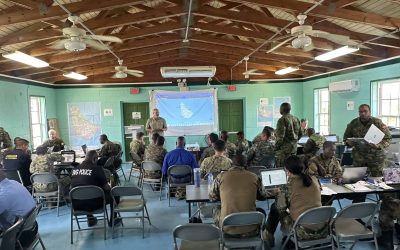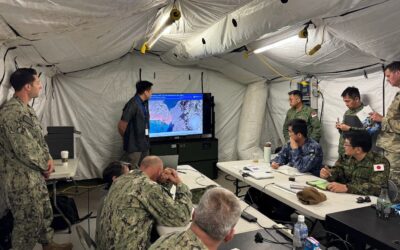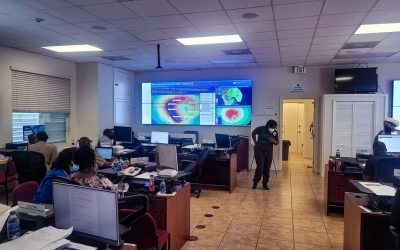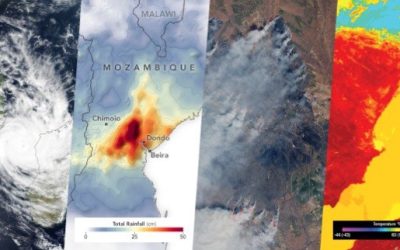The Balkans Region—A groundbreaking, dual-location Tabletop Exercise (TTX) in Tirana, Albania, and Pristina, Kosovo, took place in partnership with Pacific Disaster Center (PDC) and the United States Forest Service (USFS) on October 22–23, 2024. A first of its kind, the innovative exercise simulated a real-time multinational response to a severe winter storm—enabling cross-border collaboration and showcasing the power of modern technology in crisis management. The activity successfully concluded a larger two-year Balkans Early Warning Capacity Development program funded by the USFS and designed to build regional disaster preparedness and response capabilities. With the increasing frequency and severity of natural disasters, cross-border collaboration has become an essential strategy for effective disaster preparedness.
Exercise participation from key disaster management agencies included Albania’s National Civil Protection Agency (NCPA), Kosovo’s Emergency Management Agency (EMA), Montenegro’s Rescue and Protection Directorate (RPD), and other key stakeholder organizations such as the Albanian Red Cross, Kosovo’s National Hydro-Met Agency, and the USFS, which all contributed significantly to the event.
“DisasterAWARE is a platform we need to use with our decision-makers in the future to improve our early warning system and response capabilities.”
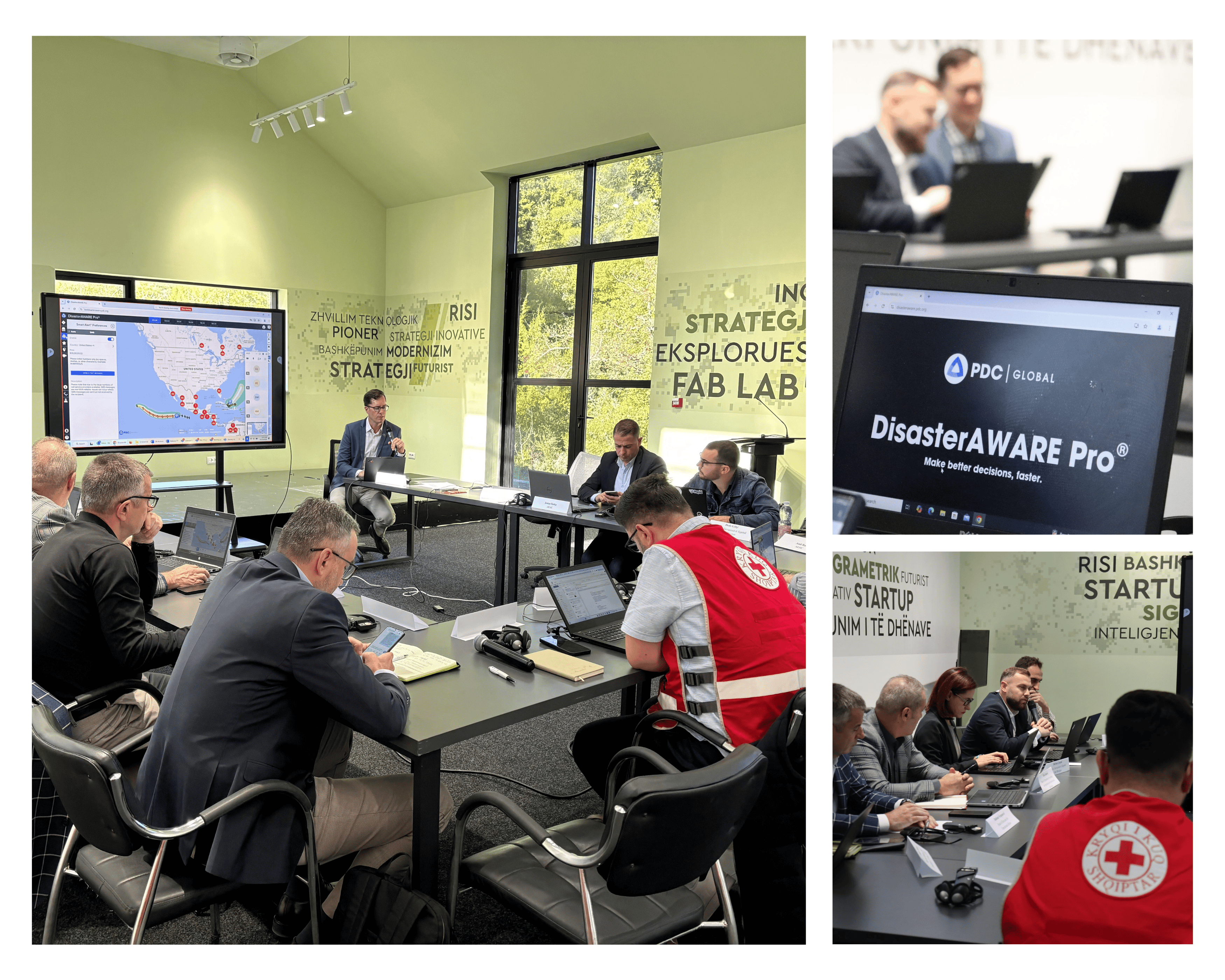 “Looking back to the project inception meeting in November 2022, I knew the project was necessary, and I could see the positive changes that DisasterAWARE would bring to us. There were some reservations, such as how can we use this? But now we see how easy it is for us to use, how it makes our job easier, how we can make decisions based on information. Decision-making is now more effective and efficient. We need to continue to practice, but we see how DisasterAWARE will change everything for us in a positive way,” said Albania NCPA Director of IT and Training, Jonian Harkan.
“Looking back to the project inception meeting in November 2022, I knew the project was necessary, and I could see the positive changes that DisasterAWARE would bring to us. There were some reservations, such as how can we use this? But now we see how easy it is for us to use, how it makes our job easier, how we can make decisions based on information. Decision-making is now more effective and efficient. We need to continue to practice, but we see how DisasterAWARE will change everything for us in a positive way,” said Albania NCPA Director of IT and Training, Jonian Harkan.
“This has been a very good experience. We shared data and information with our Balkan neighbors. It prepares us for a real cross-border event,” affirmed Kosovo’s Emergency Management Agency Representative
“DisasterAWARE is a platform we need to use with our decision-makers in the future to improve our early warning system and response capabilities. It provides a very effective means to include information from the field into our operations,” said Milan Radović, Head of Training and Operational Department, Montenegro RPD.
Participants engaged in a simulated winter storm scenario, addressing related hazards like avalanches, landslides, and flooding. Utilizing PDC’s state-of-the-art global early warning and risk intelligence platform, DisasterAWARE Pro, participants received Smart Alerts and advanced impact analytics from DisasterAWARE, conducted damage assessments, and created customized situation reports (SitReps) to guide actions. Participants also explored additional use cases for DisasterAWARE Pro, such as exporting data for external reports and integrating visualizations into SitReps to enhance coordination across national boundaries in the Balkans region. Upon completion of the TTX, participants obtained DisasterAWARE Pro credentials to strengthen preparedness as they operationalized the use of DisasterAWARE within their EOCs.
As neighboring countries, Albania, Montenegro, and Kosovo face similar natural hazards, particularly during the winter months. Heavy snowfall, flash floods, and landslides pose significant risks to both nations, often requiring coordinated responses. The TTX highlighted the potential for Albania, Montenegro, and Kosovo to lead regional efforts in disaster preparedness, setting an example for greater unity in building resilient communities that are capable of facing shared challenges. Equipped with advanced technology and improved collaboration, the activity set a new benchmark for emergency preparedness efforts among participating Balkan states and beyond.
ABOUT PDC
Pacific Disaster Center (PDC) is a leading scientific innovator of global risk reduction science and technology. As a University of Hawai’i applied science and research center, our work intersects with a variety of government, community, academic, and scientific organizations at home and around the world to build resilience to natural and man-made hazards and enhance the capacity to quickly and accurately anticipate and prepare for new and emerging threats. Our innovations in multi-hazard early warning systems, predictive analytics, data science, and machine learning provide decision-makers with the powerful tools and insights they need to navigate today’s complex and interconnected risk landscape.

